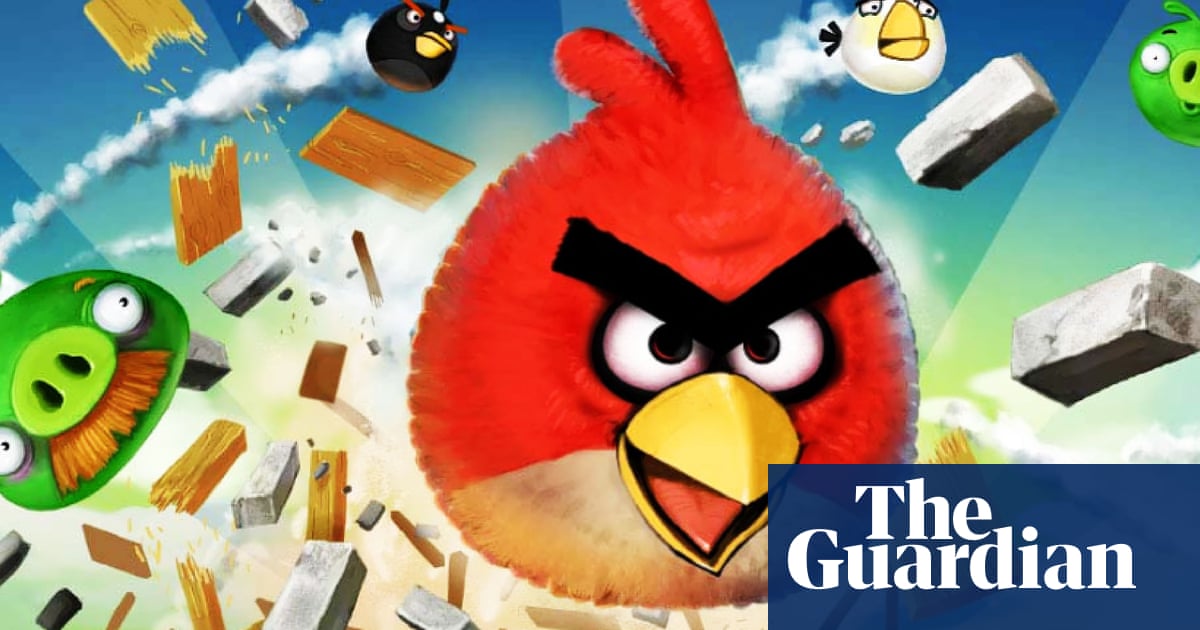
Pushing Buttons: The true cost of ‘free’ mobile games
In this week’s newsletter: The boom years of smartphone gaming have given way to a naked cash-grab that rewards player-unfriendly design

In the first half of the 2010s, when smartphones became ubiquitous, mobile gaming was exciting new terrain for both developers and players. Here was a new platform, suddenly, in everyone’s pocket, with a touchscreen that was so much easier to use than a controller and a built-in audience of millions. There were new, interesting games – maybe a few quid a throw, so much more affordable – designed to fit into those small gaps in your life, on the train, at the bus stop, on your lunch break (and, let’s not lie, while you’re hiding from your family in the toilet).
Breakout iPhone hits such as Angry Birds, Cut the Rope, Clash of Clans and Crossy Road became some of the most successful things on the App Store, something that Apple itself seemed baffled by at the time. And it employed talented developers: Simogo, makers of the wonderfully creepy Year Walk and the stylish, mind-expanding mystery game Device 6; Kairosoft and their adorable, totally absorbing simulation games such as Game Dev Story; Terry Cavanagh’s Super Hexagon; Ustwo and Monument Valley; Superbrothers: Sword and Sworcery EP. I played so many fun, fascinating, experimental things on phones in the early years of the mobile gaming boom.
Today, though, if you were an independent developer with an innovative idea, you’d be mad to release it on the App Store. You would be drowned out by thousands of competing games, among them a flood of knock-offs and cheap garbage. Smartphone gaming is now dominated by a couple of perennial money-spinners – Candy Crush among them – and a few companies that make most of the biggest hits. Indie developers have largely migrated back to PC and consoles, and what’s left on the app stores is a teeming mass of suspicious-looking free games whose quality is impossible to discern.
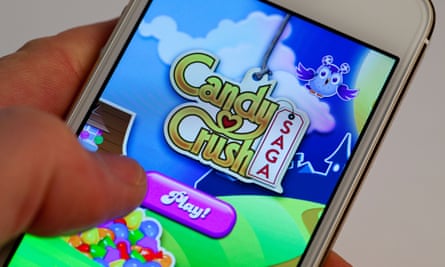
If you have children with access to a phone or tablet, you will be familiar with the sheer volume of absolute crap on mobile storefronts, running the gamut from bootleg Pac-Man to mildly disturbing dental-procedure games to aggressively cute virtual pet games that ask you for money every 35 seconds. There’s still some great stuff there, but it’s become difficult to find.
Half of the video games industry’s revenues come from people playing games on mobile, and we all know these are not people paying £3.59 for a complete, discrete experience. They’re the people dropping £10 (or £100) a month on cosmetic items, randomised rewards or virtual currency to get around the artificial limitations that most smartphone games use to extract money from players. The free-to-play model – which asks you to download a title for free, and then either put up with annoying ads or time restrictions or pay to remove them, often temporarily – is now so totally dominant on app stores that a paid game rarely stands a chance of success. It is a system that rewards actively player-unfriendly design. It works, in that it makes a lot of money, but it’s also awful.
We’ve all seen the headlines about kids inadvertently spending eye-watering sums of their parents’ money on these games. But even if you get your parental controls right and your offspring can’t max out your credit card on treats for their virtual panda, these systems still habituate children to a drip-feed, compulsive form of gaming that can’t be healthy for developing brains (or any brain, actually). This week, I had a conversation with my six-year-old about removing the ad-festooned free-to-play football games that had sneakily made their way on to his tablet over the Christmas holidays. “But I LIKE the adverts!” he complained. I asked him, “wouldn’t he rather play a game that wasn’t constantly bugging him to buy or accumulate virtual money to unlock stuff? “But the money IS the game!” The thing is, he’s not wrong.
There are ways to make free-to-play fair and unobtrusive, but many smartphone games are money-accumulating exercises first and creative products second. Even a good game can be warped by this merciless business model. Games designed around it, meanwhile, are usually terrible; the worst examples ask you for money every few minutes. When only 5-10% of your game’s audience ever pays up, you have to aggressively monetise the players who do. This parlance has fallen out of fashion in recent years because it was so nakedly exploitative, but during the first boom years of smartphone gaming developers used to talk about “whales” – the top 0.5% of players who would spend many thousands on a single game. This is the same language that the gambling industry uses to describe high-rollers.
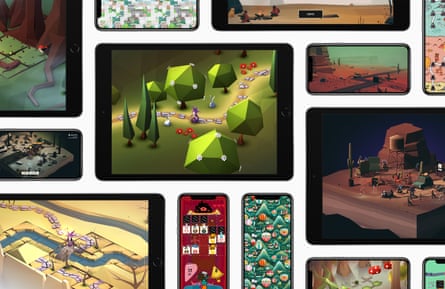
I still think smartphone gaming is full of creative potential. Apple Arcade, the iOS subscription service that offers access to a couple of hundred “premium” (ie, not full of ads and micro-transactions) games, remains a showcase of high-quality and endearingly weird stuff such as Sneaky Sasquatch, Sayonara Wild Hearts and Assemble With Care. But the business model has been actively strangling creativity in this space for years, even as it generates more and more money. It’s become an example of the best and worst things about how the video games industry works. Now and then you get a world-changing moment of genius like Pokémon Go, which brings people together and redefines what games can be, but plenty of other hits are actively designed to keep players locked in the grind, tapping away for a drop of dopamine.
What to play
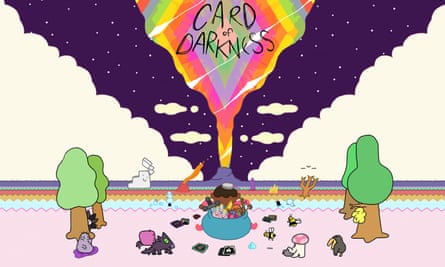
If you want the creative best of mobile gaming, I can wholeheartedly recommend Apple Arcade if you have an iPhone or iPad – its curation is great. In the past couple of months I’ve played Charrua Soccer with my son, which has lovely retro vibes; Card of Darkness, a cute, chill card game illustrated by Adventure Time creator Pendleton Ward; the mind-expanding puzzle game Manifold Garden; and Really Bad Chess, which is played with random pieces, so you might end up with three queens, five warring bishops and a bunch of pawns. Versions of most of the best mobile games of the past five years or so are also included, if you’re nostalgic for Threes! or Crossy Road.
Available on: Apple iOS
Approximate playtime: As long as you want
What to read
-
An artist called Cat Graffam recreated Goya’s painting Saturn Devouring His Son using Mario Paint, carrying on a long tradition of artists copying masters’ work as a learning exercise – except this time with a SNES mouse.
-
There’s a new UK studio in town: Maverick Games, formed by some of the leading talent from Forza Horizon studio Playground Games, VGC reports. Its first game will be an open-world one, which may or may not remain in the racing genre.
-
HBO’s The Last of Us adaptation premieres on 15 January in the UK on Sky Atlantic, and the reviews are pretty good.
-
CD Projekt Red has paid $1.85m to settle a lawsuit with investors who claimed they were misled over the state of Cyberpunk 2077, a game that released in a piteous condition in 2020 but has since salvaged its reputation.
-
Despite being widely unavailable so far due to manufacturing issues, the PlayStation 5 has now sold 30m units, Sony gaming boss Jim Ryan announced at tech show CES.
What to click
Playtime’s over: how 2023 could reshape video games
“He gives us every bit of himself”: how God of War’s actors hold the whole game together
Super Bomberman saved my Christmas – and my middle-aged gaming dad pride – Dominik Diamond
A complete guide to this week’s entertainment
Question block
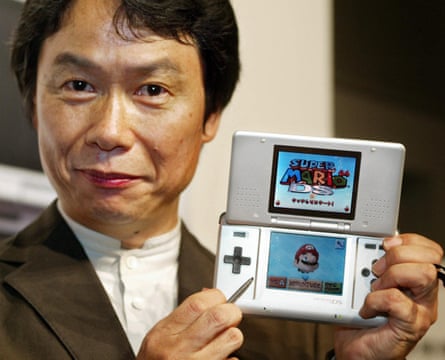
Reader Adam asked a question that I’ve been meaning to answer for a long while:
“I recently picked up a secondhand Nintendo 3DS and I’m catching up on some of the wonderful games released for it. I’m also enjoying the glasses-less 3D a lot, which got me thinking: What are your favourite Nintendo gimmicks from the past and what would you like to see them do next?”
Whenever a games company comes up with a bright new idea, there’s a tendency for that company (and commentators) to proclaim it as the future of gaming. Motion controls? Future of gaming. The Kinect camera? Future of gaming. VR headsets? Not actually the future of gaming, it turns out. Most of these things are cool ideas that don’t actually revolutionise the way we play, but are nonetheless fun at the time. Nintendoadopts this attitude with its hardware: it’s just trying stuff out. 3D didn’t work out with the Virtual Boy, but they nailed it with the 3DS. The Wii’s waggle control was wildly popular, but the Wii U’s second screen was not.
My favourite of them all was the original Nintendo DS’ dual screens, and its other wee gimmicks. I loved the wild things developers did with it: blowing on the mic to put out a fire; arranging the console so that the screens reflected on each other to solve a puzzle; opening and closing the lid to stamp a piece of virtual paperwork. In one of the DS Zelda games, you have to shout at someone on the other side of a river to get them to lower a bridge, which made me feel crazy for thinking of it and then delighted when it actually worked. I’m also one of the 11 people who enjoyed playing Super Mario 64 with a thumb on a touchscreen. The Switch consolidated Nintendo’s handheld and home consoles, possibly marking an end to these wild hardware experiments, but I’d totally buy a new dual-screen console. Maybe give it a crank, like the Playdate.



